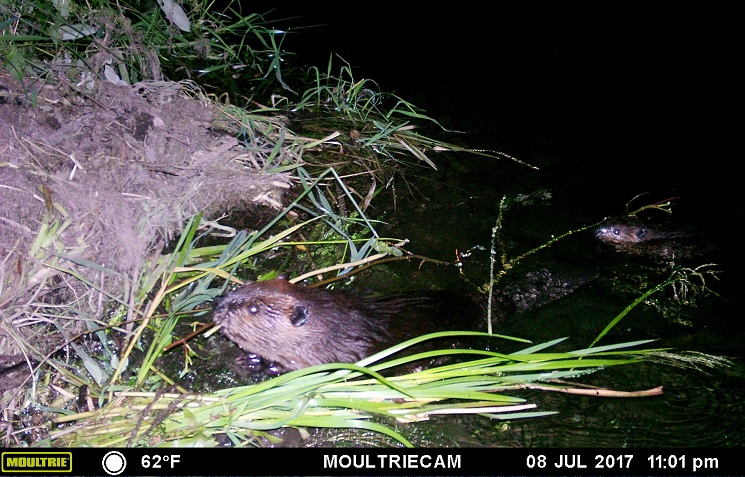Life history and biology of beavers
Our beaver life history and ecology technical paper is full of life history information about beavers:
For some less technical information, here are some interesting and pertinent facts. Beavers are:
- rodents. They are the largest member of the rodent family in North America.
- semi-aquatic. They spend much of their lives in ponds, rivers, streams, and adjacent woodlands.
- nocturnal. They do most of their work at night. They are also active year-round, even when their pond surfaces freeze in winter.
- monogamous. Adults usually mate once a year, in February, and produce two to four kits in May.
- territorial. Colony densities rarely exceed one colony for every half-mile of stream.
Beaver families, or "colonies," are made up of one to eight individuals (five on average) with all members working together to build lodges and dams and gather food. Colonies typically consist of two adults and the young of the current and previous 1-2 years. When the new kits are about to be born in the spring, their oldest siblings usually leave their family group to try and establish a colony of their own. This pattern is why most beavers are out establishing new homes in the spring and summer.
Although beavers can live in large lakes and rivers where they do not build dams, in small stream systems they build dams to form ponds. Dams are made out of branches, logs, rock, and mud. The ponds help keep beavers safe from predators, and the diverse wetland systems that result also support a wide variety of fish, amphibians, birds, and mammals (see Environmental Benefits).
Beaver build their lodges (their houses) with mud and sticks. They will also make dens in the banks of lakes, rivers, and wetlands. Beavers feed in water and close to water to try to stay safe from predators. They eat the bark, leaves, and twigs of many woody species as well as herbaceous aquatic plants such as water lilies, cattails, and more.


 Translate
Translate